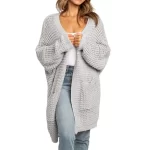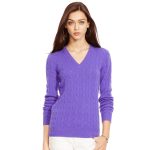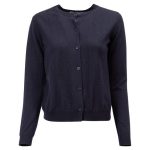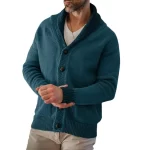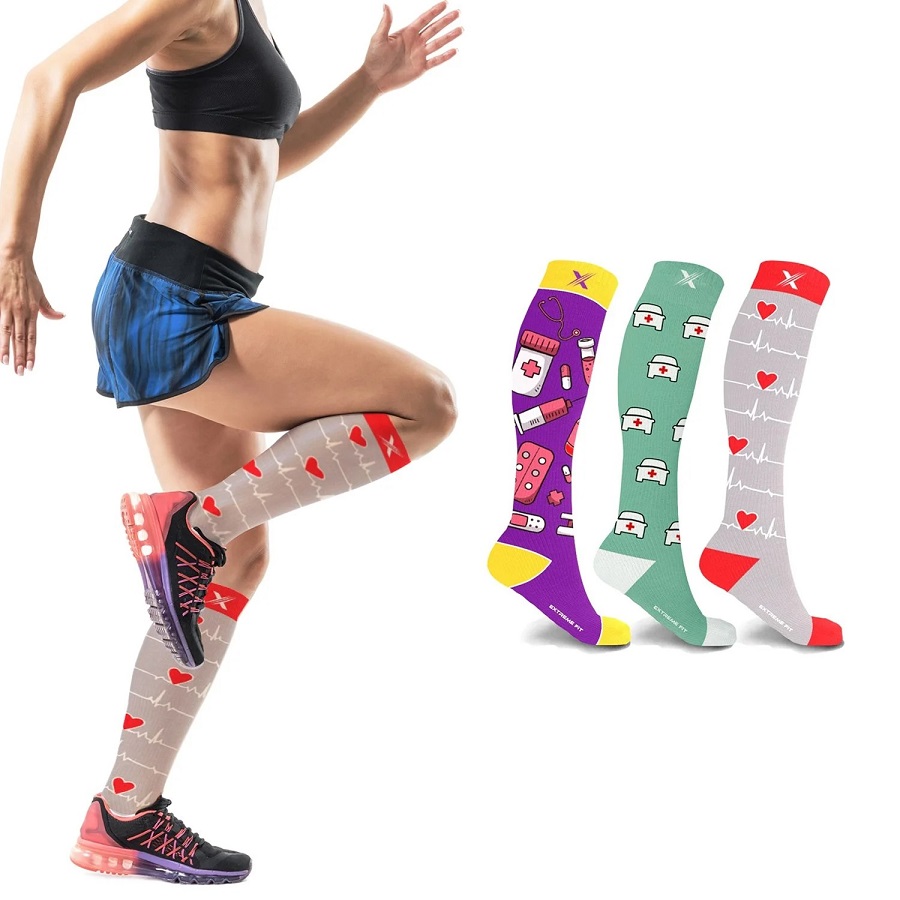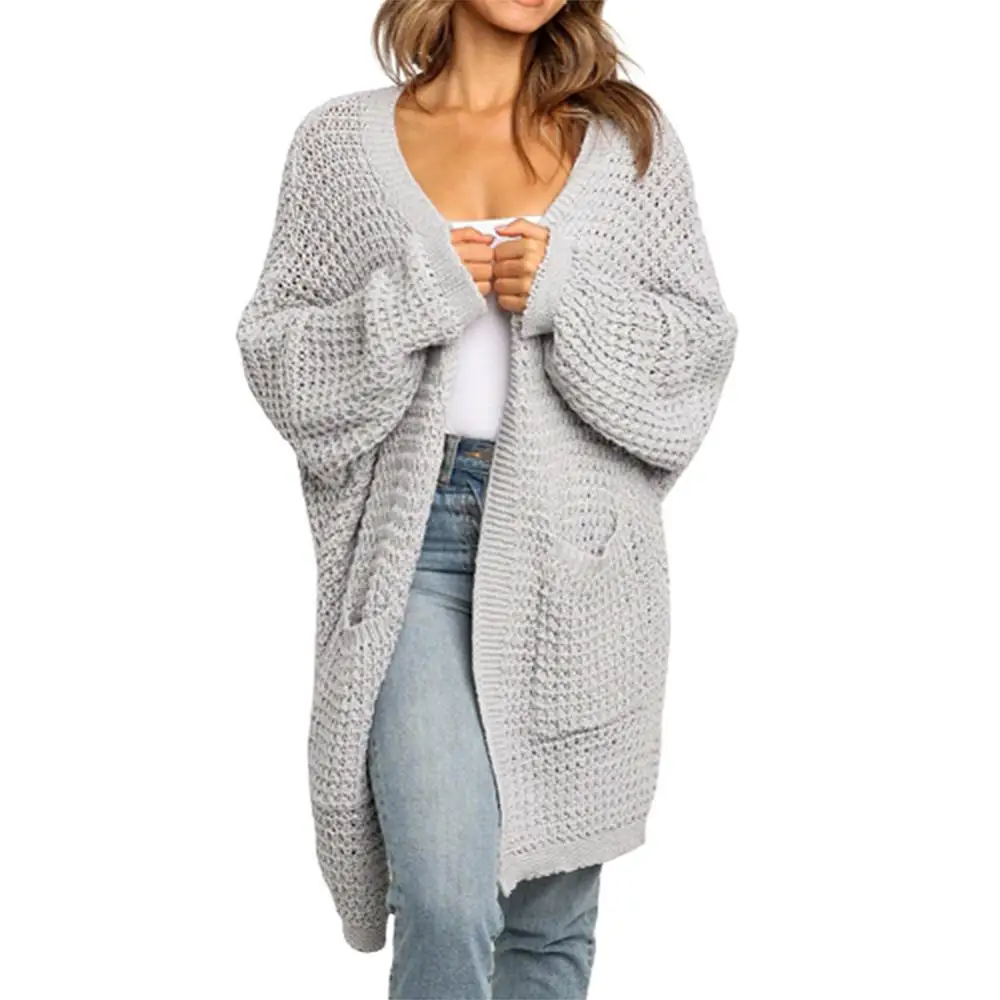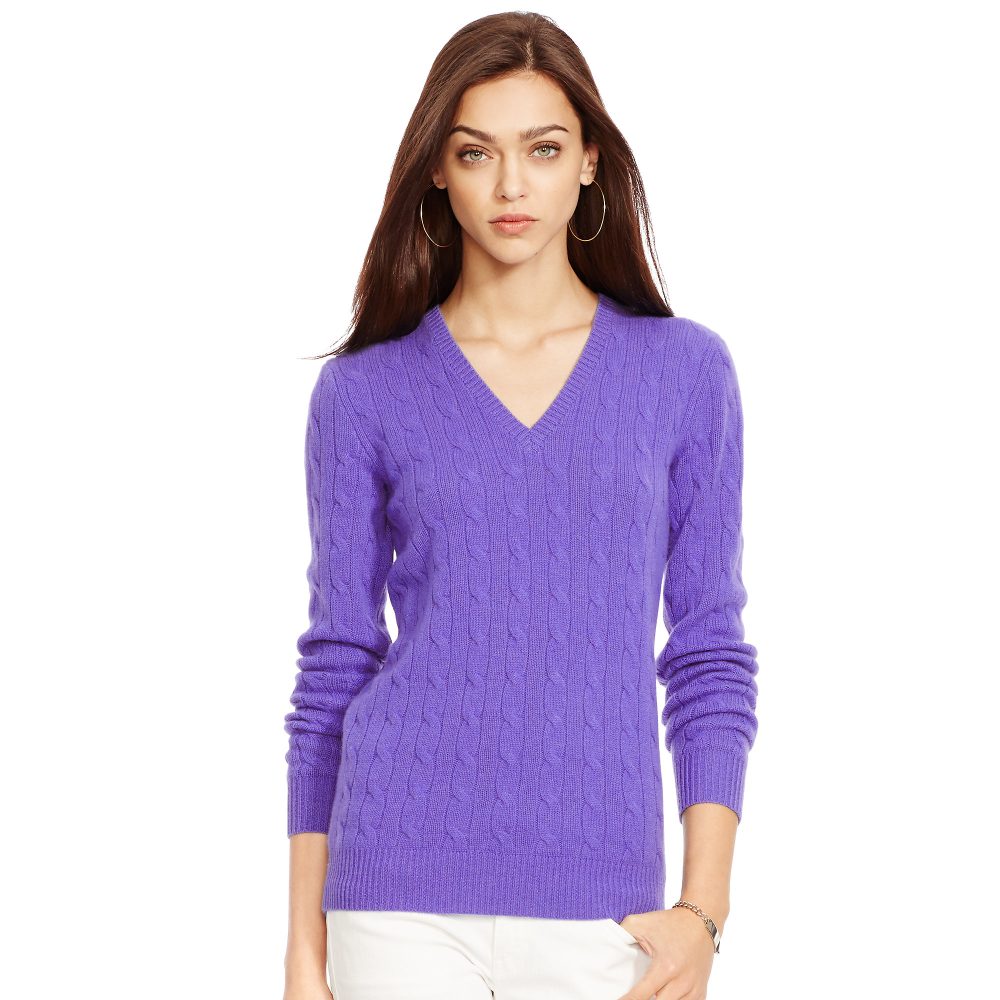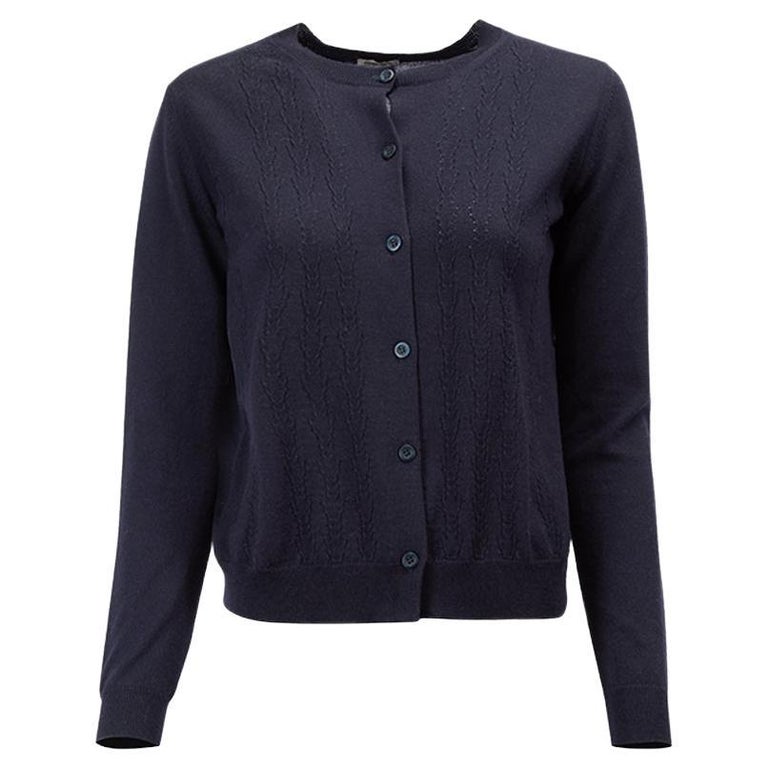The Importance of Compression Socks in Women’s Health
Medical compression socks for women are not just a trend. They serve a vital role in healthcare. These socks apply gentle pressure to the legs and ankles. This helps to promote blood flow from the lower body to the heart. Improved circulation can reduce swelling and prevent blood clots.
For many women, compression socks are a daily necessity. Female athletes use them to recover after intense workouts. Pregnant women wear them to ease leg pain and swelling. Working women who stand long hours also find relief by wearing compression socks.
The benefits of medical compression socks for women extend to those with venous disorders too. They are essential for managing symptoms of varicose veins and deep vein thrombosis. Regular use can improve quality of life and mobility for many women.
By bolstering circulation, medical compression socks for women also help to prevent leg fatigue. This is a boon for women who are on their feet all day. Teachers, nurses, and retail workers especially appreciate the support these socks offer.
In summary, compression socks are key in maintaining leg health for women across various walks of life. From boosting performance in sports to providing comfort during pregnancy, they address diverse needs. Their ability to manage health conditions makes compression socks an important part of women’s wellness.
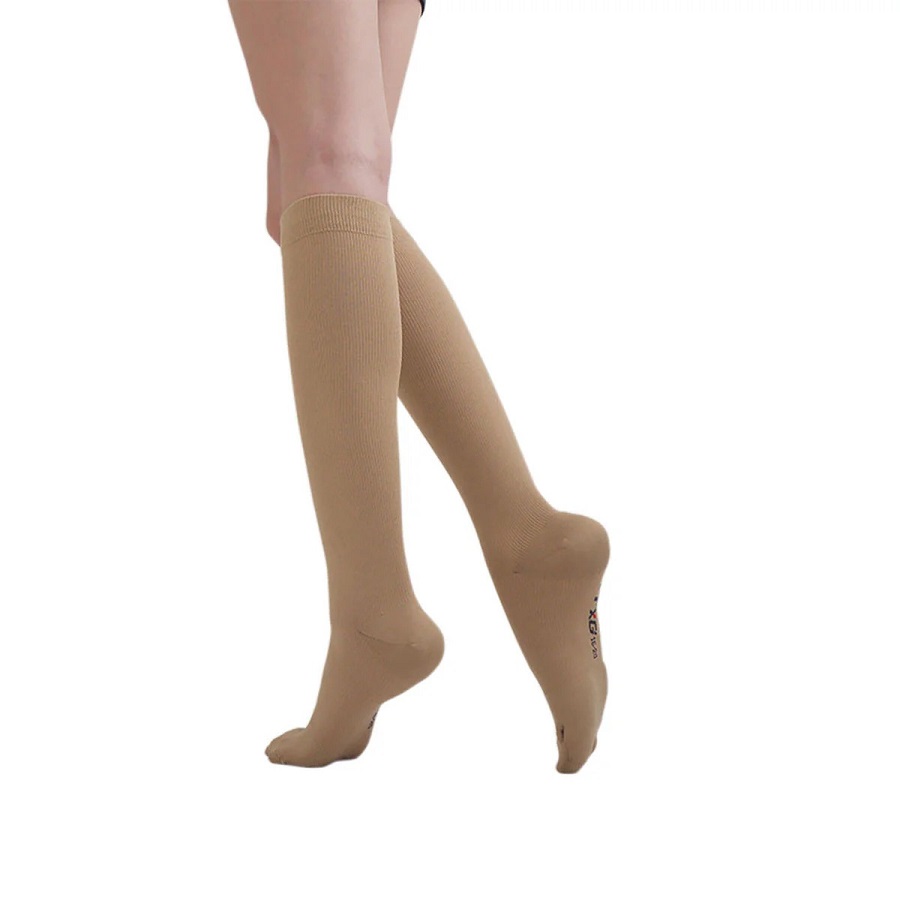
A Brief History of Compression Therapy
Compression therapy has been around for centuries. Its early forms included bandages and bindings to support and heal. Ancient Greeks used to bind legs with tight bandages for healing. By the Roman times, compression techniques became more refined.
In the 1600s, compression stockings were developed as a remedy for venous disorders. These were the precursors to modern medical compression socks for women. Throughout history, the methods evolved to become more effective and comfortable. In the 1950s, the invention of elastic fibers gave rise to the compression socks we know today.
The application of compression therapy has deep roots in science and medicine. Today, it is an established practice backed by research. Medical compression socks for women now come in various styles and pressures. They meet diverse health and lifestyle needs. Doctors often recommend these socks for various leg-related health issues.
Over the years, compression socks have become a blend of technology and comfort. They help many women maintain leg health and manage different medical conditions. While the history of compression therapy is rich, its future looks even brighter. Innovations continue to enhance their effectiveness and comfort, making them indispensable for women’s health.
How Compression Socks Work for Women
Medical compression socks for women work by applying pressure. They start tighter around the ankles and lessen as they move up the leg. This design helps to push blood back towards the heart. The return of blood flow is important for preventing leg swelling and blood clots.
Compression levels vary among different socks. Lighter compression can help with everyday fatigue. Higher compression may be used for certain health conditions. It is vital to choose the right level of compression for your needs.
By squeezing the legs, these socks also support vein walls. This support helps the veins work better. It stops blood from pooling in the legs. Thus, women feel more comfort and see less swelling. Women who sit or stand for long hours can find relief with these socks.
In essence, medical compression socks for women bolster circulation. They aid in leg health, provide comfort, and can even prevent serious issues. They do this all while allowing women to go about their daily activities with ease.
Types of Medical Compression Socks Available for Women
When considering the purchase of medical compression socks for women, it’s important to know the various types available. These socks cater to a range of needs and preferences. Here are the common types that women can choose from:
- Graduated Compression Socks: These are the most common type. They have the highest compression at the ankle. The compression decreases as it goes up the leg. Doctors often recommend them for women with specific medical conditions.
- Anti-Embolism Socks: These socks are designed for women who are immobile. They help prevent blood clots from forming due to inactivity, such as after surgery.
- Non-Medical Support Hosiery: They provide uniform compression. These include flight socks and are used to relieve tired, aching legs.
- Pantyhose-style Compression Socks: These offer full leg coverage. They are suitable for women who prefer the look and feel of traditional pantyhose with the benefits of compression.
- Athletic Compression Socks: Specifically aimed at female athletes. They can improve performance and recovery after exercise.
Each type comes in various colors, styles, and compression levels. Hence, women can find a pair that suits their medical needs and personal taste. Before choosing a pair, it’s important to consult a healthcare provider. They can help determine the best type and fit for your specific health situation.
In summary, there’s a diverse range of medical compression socks for women available. Whether for health, comfort, or sports, there’s a suitable option for each woman’s lifestyle and needs.
When and Why Women Should Wear Compression Socks
Understanding the right time to wear medical compression socks for women is crucial for their health. One of the key times to wear these socks is during long periods of sitting or standing. For example, women with desk jobs or those who work on their feet find compression socks helpful. They reduce leg swelling and discomfort from prolonged inactivity.
Pregnancy is another period when compression socks are beneficial. They can alleviate swollen feet and painful legs. The enhanced circulation can also lower the risk of developing varicose veins which pregnant women are prone to. It is important to consult with a healthcare provider before using them during pregnancy.
Athletes also turn to compression socks, especially after rigorous training sessions. These socks expedite recovery and prevent muscle soreness. They can be worn during workouts to improve performance and stamina as well.
Travel, particularly long flights or road trips, is another time to wear compression socks. They counteract the risks associated with deep vein thrombosis (DVT), which is higher with constrained movement.
Lastly, women with existing health conditions like varicose veins or chronic venous insufficiency should wear compression socks. This regular use can manage symptoms and avoid further complications.
In general, women wear medical compression socks for health maintenance, comfort, or sports performance. Always get advice from a healthcare provider to choose the proper compression level for your needs. This ensures that you reap the benefits without any drawbacks.
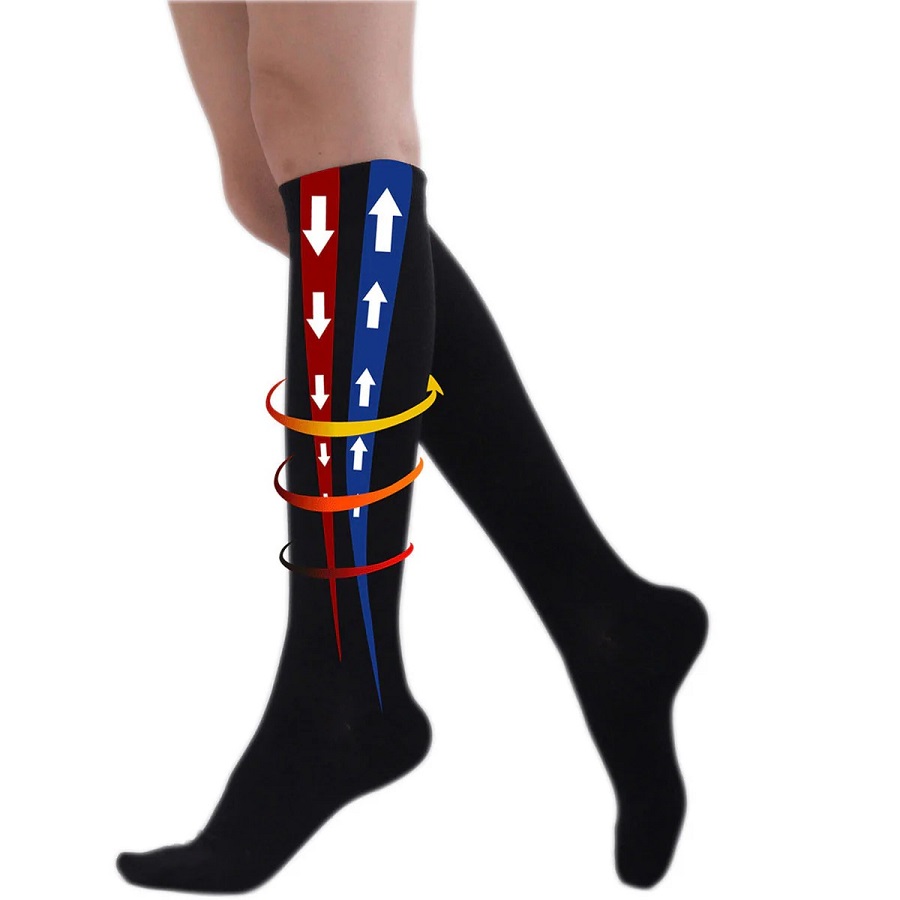
The Role of Compression Socks in Managing Specific Health Conditions
Medical compression socks for women can be essential in managing certain health conditions. They aid in the treatment of various issues concerning leg health. Let’s look into how these socks contribute to specific health conditions.
- Venous Disorders: Women suffering from chronic venous insufficiency, varicose veins, or leg ulcers find relief with compression socks. They help by improving blood flow and reducing leg pain and swelling.
- Deep Vein Thrombosis (DVT): To prevent DVT, a condition where blood clots form in deep veins, compression socks are beneficial. They prompt better blood circulation and reduce the risk of clotting.
- Lymphedema: Those with lymphedema, a condition leading to swelling due to lymph fluid build-up, use compression socks for easing discomfort.
- Pregnancy-Related Swelling: Many pregnant women wear compression socks to control swelling in the feet and legs. These socks also lower the risk of varicose veins that often come with pregnancy.
- Post-Surgical Recovery: Women recovering from surgeries, particularly those involving the lower limbs, use compression socks. They help with circulation and reduce the potential for clotting during recovery.
- Athletic Recovery: Female athletes use compression socks after intense workouts to speed up muscle recovery and reduce soreness.
Remember, it’s important to consult with a healthcare professional before using compression socks for any health condition. Only a professional can advise on the correct compression level and ensure the socks fit properly for your personal needs.
Guidelines for Choosing the Right Compression Socks
Choosing the right medical compression socks for women is key to their effectiveness. Below are some guidelines to help make an informed decision:
- Know the Compression Levels: Compression socks come in various levels of pressure, measured in mmHg. Light compression (8-15 mmHg) is for daily wear. Medium (15-20 mmHg) may suit prolonged sitting or standing. High compression (20-30 mmHg and above) is often for medical conditions. Understand which level you need before buying.
- Consult a Healthcare Provider: It’s vital to talk to a doctor to determine the right compression level for your needs. They can assess your health and suggest the appropriate type of compression sock.
- Consider Your Lifestyle: If you’re an athlete, look for socks designed for exercise. For long hours on your feet, choose a type that offers more support. Your daily activities should guide your choice.
- Get the Right Fit: Compression socks should fit snugly but not be overly tight. Measure your legs or get fitted professionally to ensure proper sizing. Incorrect fit can be uncomfortable and reduce the socks’ benefits.
- Look for Quality Material: Good quality compression socks last longer and provide consistent pressure. They should also be breathable and comfortable for extended wear.
- Examine the Style and Ease of Use: Compression socks come in different styles. Some have zippers or are easier to put on than others. Pick a style that you’re comfortable with and that suits your fashion sense.
- Check for Special Features: Some socks come with added features such as moisture-wicking or antibacterial materials. Consider these if they meet specific needs you have.
- Read Reviews and Testimonials: Learn from others’ experiences. Reviews can provide insight into the durability and effectiveness of the socks. However, remember that personal needs vary.
Selecting the correct compression socks involves understanding your health, lifestyle, and personal preferences. By following these guidelines, you can find a pair that offers the right support, comfort, and style for your needs. Always prioritize comfort and proper fit to ensure the best results for your leg health.
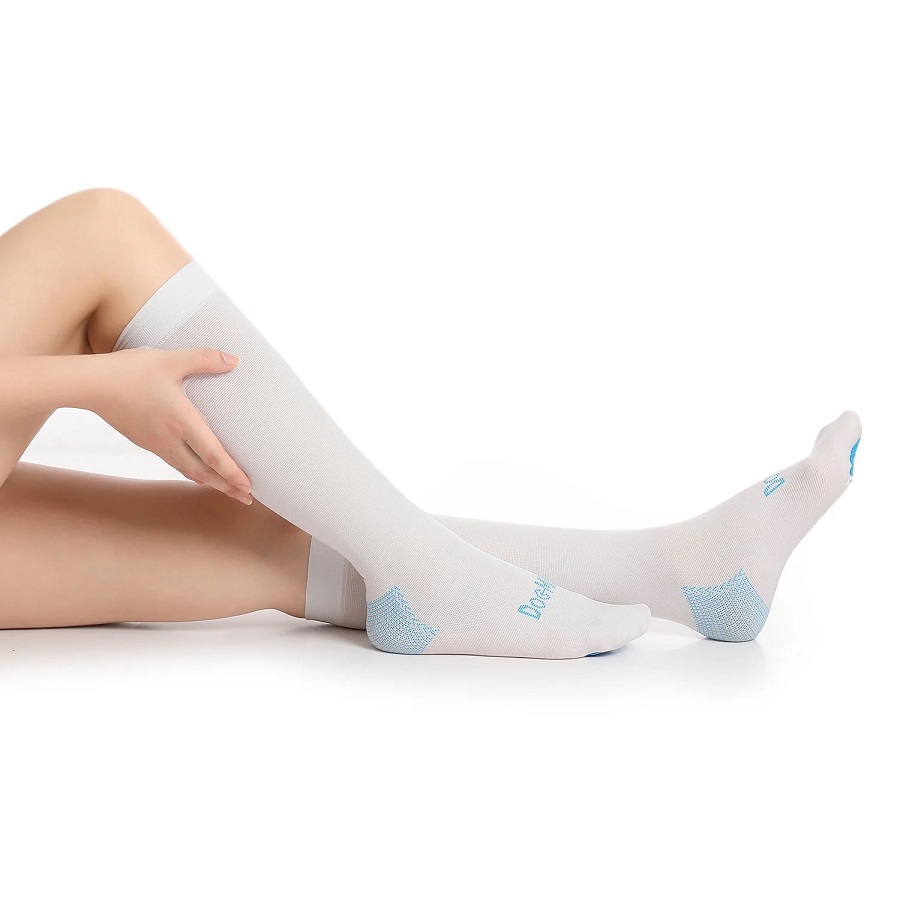
Tips for Using and Caring for Medical Compression Socks
Using compression socks correctly can maximize their benefits. Caring for them properly ensures they last longer. Here are some tips for women using medical compression socks:
- Wear Them Correctly: Put on your compression socks in the morning before your legs swell. Smooth out any wrinkles to ensure even pressure distribution.
- Remove Them Properly: Gently roll down the socks instead of pulling them off. This helps avoid damage to the fabric and your skin.
- Daily Inspection: Check your socks each day for signs of wear, such as thinning or holes. Replace them if you notice damage.
- Clean Them Regularly: Wash your compression socks after each use. Follow the care instructions. Some may need hand washing, while others can be machine washed.
- Dry Them Properly: Air dry socks or use a low-heat setting on a dryer. Do not wring them out, as it can damage the fibers.
- Rotate Pairs: Have more than one pair of socks to use while cleaning the others. This also extends the life of each pair.
- Avoid Harsh Chemicals: Do not use bleach or fabric softeners. They can break down the elasticity of your socks.
- Store Them Right: Keep your compression socks in a dry, cool place. Avoid folding or rolling them tightly to maintain shape.
By following these tips, women can make the most of their medical compression socks. Proper use and care help improve leg health and comfort in daily activities.

